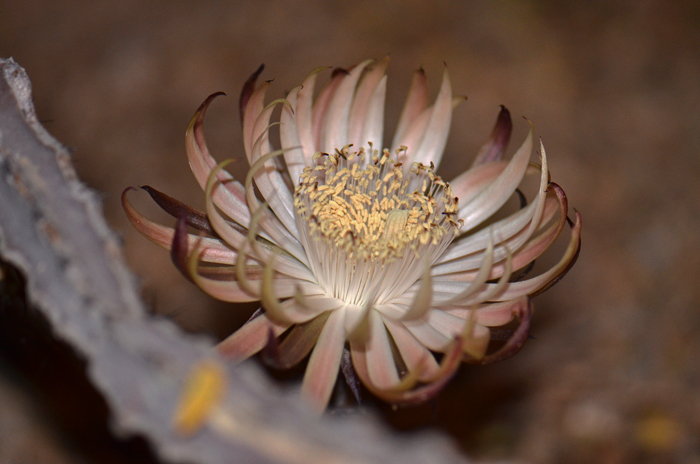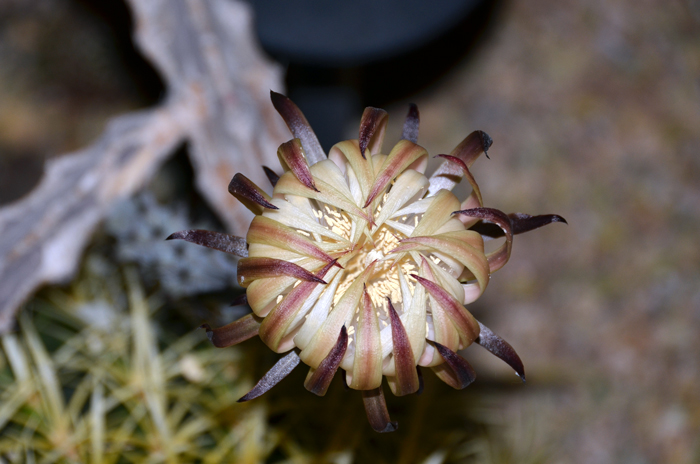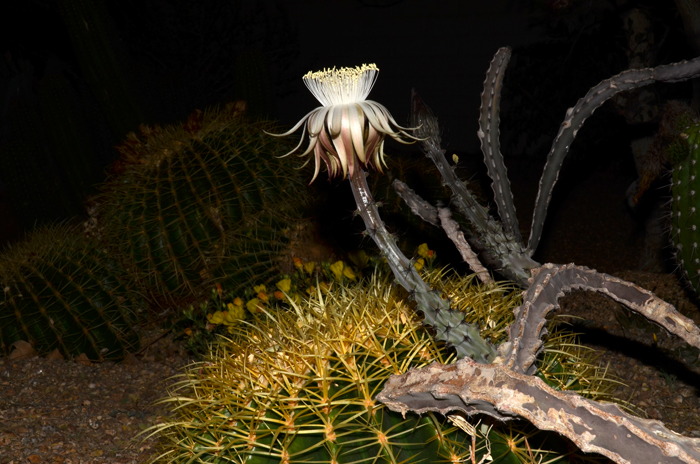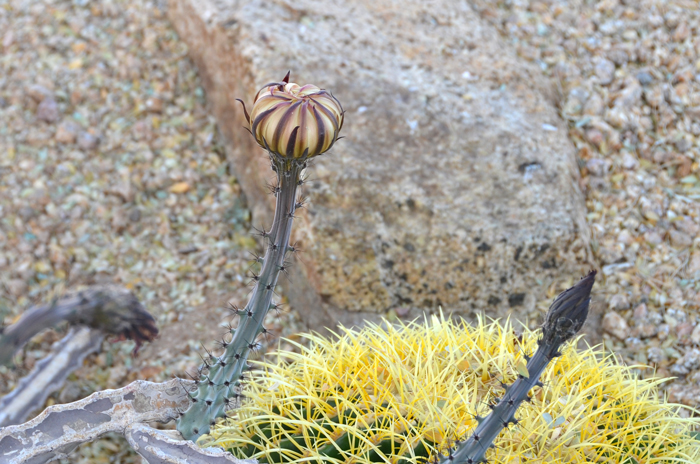Peniocereus johnstonii, Matraca, Pitayita, Saramatraca




Scientific Name: Peniocereus johnstonii
Common Name: Matraca
Also Called: Pitayita, Saramatraca
Family: Cactaceae, Cactus Family
Synonyms: ()
Status: Native to Baja California.
Duration: Perennial
Size: Up to 2 or 3 feet or so.
Growth Form: Shrub or subshrub; erect, arching, sparingly branched, stems 3-angled; genus characteristics; roots tuber-like; stems unsegmented, gray, gray-green, greenish brown, brown, or purplish, columnar.
Leaves: Leaves modified into spines emerging from areoles; lacking glochids.
Flower Color: White; flowers large showy, nocturnal, remain open next day for 1 hour or so; flowers fragrant, salverform with long tube flaring abruptly near apex; tepals lanceolate, outer tepals greenish and may be tinged with red, purple, brown or white, inner tepals white or cream; fruits indehiscent, red to scarlet, fleshy, rounded.
Flowering Season: May to June.
Elevation: Sea Level to 1,600 feet.
Habitat Preferences: Alluvial soils in desert scrub in association with Mesquite (Prosopis sp.). The species is very difficult to spot.
Recorded Range: Baja California; Peniocereus johnstonii is endemic to Mexico, where it is distributed in the state of Baja California Sur inland and in at least seven islands
North America & US County Distribution Map for *Peniocereus johnstonii. *Not found in the United States. Restricted to Baja California.
U.S. Weed Information: No information available.
Invasive/Noxious Weed Information: No information available.
Wetland Indicator: No information available.
Threatened/Endangered Information: Peniocereus johnstonii is listed as "Least Concern" in spite of its restricted range (its extent of occurrence is ~ 2,000 km2) because it occurs in at least seven islands where there are no threats and where the species presents the highest abundance. The sub-populations on the mainland are affected by several threats, however the species is very difficult to detect and it might be more common than it is thought. The major threats are goat trampling, cattle ranching and logging of Mesquite trees, the species nursing plant. The species occurs in low densities and is sparsely distributed. At least 50% of all individuals are distributed within the islands and the other 50% on the mainland, on the Giganta coast. The species occurs in Islas del Golfo protected area. (Source: The IUCN Red List of Threatened Species)
In the Southwestern United States, Arizona there are 2 species of Peniocereus, California, Nevada and Utah have 0 species, Nevada has 0 species, New Mexico and Texas each have 1 species. All data is approximate and subject to taxonomic changes.
Comments: Much of the botanical information on this page is adapted from technical information pertaining to the genus Peniocereus. Matraca is a species native to Baja California with very little published and on-line information available. Much information here is from The IUCN Red List of Threatened Species. In habitat the species is said to be difficult to spot which is credited for its species of "Least Concern" by the ICUN.

